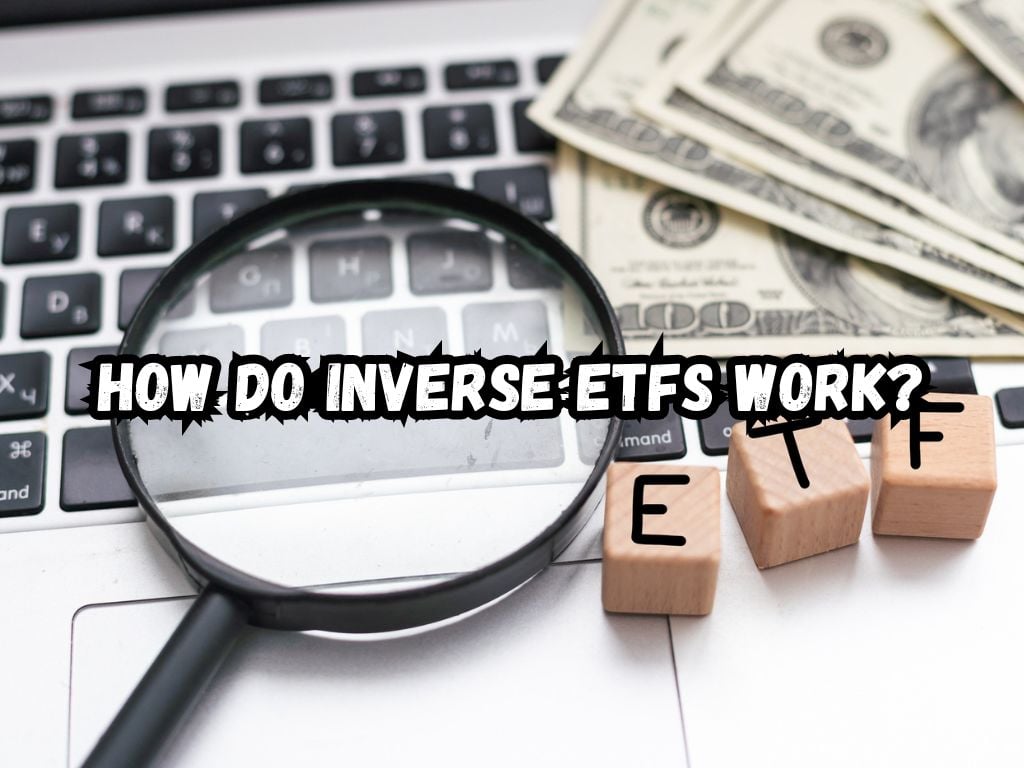Exchange Traded Funds (ETFs) have risen to prominence among investors looking for versatility and straightforward market engagement.
Within this broad category lie inverse ETFs, which offer a counterintuitive but strategic approach to investing. Unlike their standard ETF counterparts that aim to track the performance of a benchmark index, inverse ETFs are built to profit from a downturn in market indices or sectors.
They provide a way for investors to hedge against market declines without the complexities and risks associated with short-selling individual stocks. Let’s learn how do inverse ETFs work.
What Are Inverse ETFs?
Inverse ETFs, sometimes known as short ETFs, deliver returns that are the opposite of the performance of the underlying index or benchmark. If an index decreases by a certain percentage, an ideal inverse ETF would increase by an equivalent percentage.
These ETFs are notable for investors as they offer a method to place a bearish bet on the market directly through their brokerage accounts.

How Do Inverse ETFs Work?
To achieve their goals, inverse ETFs utilize derivatives such as futures contracts, options, and swaps. These are advanced financial instruments that can bet against the market.
Futures, for example, allow the ETF manager to enter into a contract to sell an asset at a preset price, intending to profit from a decrease in its market value.
The fund management’s facility in managing these contracts is vital in ensuring that the inverse ETF can fulfill its day-to-day target performance.
Diverse Types of Inverse ETFs
There exists a variety of inverse ETFs, each designed to suit different investment strategies. Single inverse ETFs target to inverse the daily performance of their underlying index.
In contrast, leveraged inverse ETFs aim for a magnified response, seeking gains of 2x or 3x the inverse of the index’s performance. Sector-specific inverse ETFs let investors gain from declines in particular market sectors.
Each type carries distinct levels of risk and potential returns, enabling investors to select the one that best aligns with their risk tolerance and investment goals.
Optimal Usage of Inverse ETFs in Portfolios
Inverse ETFs can serve as a strategic component in an investor’s portfolio, often acting as a hedge against downside risk. For instance, if an investor predicts a slump in the tech sector, they might employ a tech-focused inverse ETF to counter potential losses from their tech stocks.
However, their use requires discernment and a good sense of market timing, as they are not suitable for all scenarios.
Rispects Associated with Inverse ETFs
Like all investment tools, inverse ETFs harbor specific risks. They can produce inconsistent returns over extended periods, primarily attributable to the daily rebalancing of the fund.
This is due to the compounding of daily returns which, in a volatile market, can lead to a performance that diverges significantly from the expected inverse of the underlying index’s movement over time.
Furthermore, leveraged inverse ETFs amplify both gains and losses, which increases the potential risk.
Strategies for Investing in Inverse ETFs
Typically, inverse ETFs are used for short-term strategies because of their daily rebalancing attribute. They are utilized by seasoned traders who foresee a market downturn or by those looking to benefit from short-term market volatility.
Beginners should approach with caution, as timing the market can be particularly challenging with inverse ETFs.
Choosing the Appropriate Inverse ETF
Selecting an inverse ETF involves considering liquidity, fees, and tracking error. A highly liquid ETF is easier to trade, while lower fees prevent profit erosion.
An ETF with minimal tracking error ensures that the fund’s performance accurately mirrors the inverse of its benchmark index’s return.
Managing an Inverse ETF Investment
Investing in inverse ETFs demands ongoing attention. Investors must stay updated on market conditions which could affect the underlying index and consequently, their inverse ETF. Vigilant monitoring can facilitate timely decisions on when to adjust holdings or exit positions.

Frequently Asked Questions
What Sets Inverse ETFs Apart from Regular ETFs?
Inverse ETFs are designed to produce returns that are inversely correlated with a benchmark index or basket of assets, while regular ETFs aim to mirror the performance of their respective indexes.
Is it Possible to Profit from Inverse ETFs During a Bull Market?
While it’s generally difficult, shrewd traders might still use inverse ETFs to make profits during a bull market by targeting short-term downturns within specific sectors or indexes.
Are Inverse ETFs Viable for Long-Term Investing?
Since inverse ETFs are prone to performance discrepancies over longer periods due to daily rebalancing, they are generally more compatible with short-term trading strategies rather than long-term investing.
How Does Daily Rebalancing Affect Inverse ETFs?
Daily rebalancing can lead to discrepancies between the expected performance of an inverse ETF and its longer-term returns, particularly in volatile markets, due to the compounding of daily gains and losses.
Can Inverse ETFs Be Incorporated into Retirement Strategies?
While potentially useful as a hedging tool within a diverse portfolio, inverse ETFs are typically suited for knowledgeable investors who understand the risks and complexities of these financial instruments.
Conclusion
Inverse ETFs are advanced financial instruments that offer a way to capitalize on market declines or to complement a diversification strategy in managing portfolio risks.
Due to their inherent complexities and risks, they require an engaged management approach and a comprehensive understanding of their mechanisms of action.
While not appropriate for all investors, those who maintain a diligent watch and utilize them prudently can find them to be beneficial tools for achieving specific financial objectives.


 Tags:
Tags:










